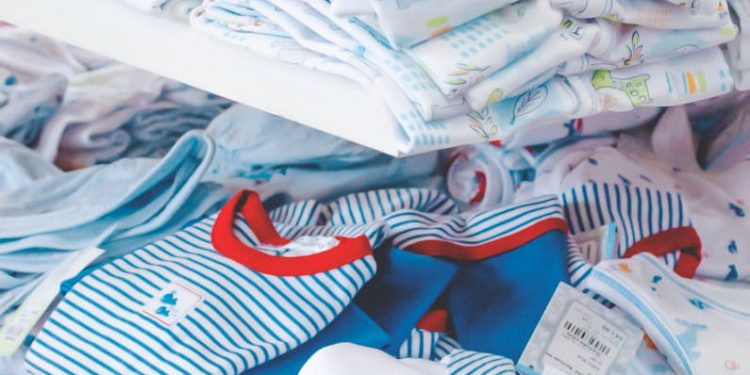Welcoming a newborn into your life is an incredibly joyous occasion, but it also comes with many new decisions—one of which is how to dress your baby in a way that keeps them comfortable and happy. Choosing the right newborn outfits is more than just selecting cute patterns and colors; it’s about ensuring your baby’s comfort, ease of movement, and convenience for you as a parent. With so many clothing options on the market, it can be overwhelming to know where to start. This guide will help you choose comfortable and functional newborn outfits that suit both your baby’s needs and your lifestyle.
1. Prioritize Soft and Breathable Fabrics
When choosing newborn outfits, the most important thing to consider is the type of fabric. Babies have extremely delicate skin, which can be easily irritated by harsh or synthetic materials. Look for clothing made from soft, breathable fabrics such as cotton, bamboo, or organic blends. These fabrics are gentle on the skin, allow for adequate airflow, and help regulate your baby’s body temperature, which is crucial in the early months.
Organic cotton is an excellent choice because it is grown without harmful pesticides and is less likely to cause allergic reactions. Bamboo fabric is also a good option because it’s naturally hypoallergenic and incredibly soft. Avoid synthetic materials like polyester, which can trap heat and cause discomfort, particularly during warmer weather.
2. Opt for Easy-to-Use Fastenings
Newborns require frequent diaper changes—sometimes as many as ten times a day. Choosing outfits with easy-to-use fastenings can make this process much less stressful. Look for clothing with snap buttons, zippers, or Velcro closures. Snaps along the legs or at the bottom of onesies are particularly convenient, as they allow you to change diapers without having to undress your baby entirely.
Avoid outfits with too many buttons, as they can be cumbersome and time-consuming to manage, especially if your baby is squirming. Zippers are a great option for sleepwear, as they provide quick access for diaper changes during the night. Just be sure to choose zippers with protective flaps to prevent irritation against your baby’s sensitive skin.
3. Layering for Comfort and Temperature Control
Newborns are still adjusting to regulating their body temperature, so layering is key to keeping them comfortable. Start with a soft onesie as a base layer and add or remove layers as needed based on the room temperature. Long-sleeve onesies, footed sleepers, and lightweight cardigans are all great options for layering.
During colder months, opt for thicker layers such as fleece or knitted cardigans, but always ensure that the clothing isn’t too tight or restrictive. Hats are also essential for keeping your baby warm, as babies lose a lot of heat through their heads. In warmer months, stick to lightweight, breathable layers that you can easily remove if your baby becomes too warm.
4. Consider Practicality for Daily Use
While it’s tempting to dress your baby in elaborate outfits, practicality should always come first. Newborns spend most of their time sleeping and feeding, so their clothing should allow for these activities comfortably. Onesies, sleepers, and rompers are excellent choices for everyday wear because they are simple, comfortable, and easy to put on and take off.
Avoid clothing with too many embellishments, such as ribbons, buttons, or sequins, as these can be uncomfortable or even pose a choking hazard. Instead, choose outfits that are soft, stretchy, and allow your baby to move freely. Remember, your baby’s comfort is more important than their appearance during these early months.
5. Choose the Right Size
Newborns grow incredibly quickly, and they can outgrow their clothes in just a few weeks. When shopping for newborn outfits, it’s a good idea to buy a few items in larger sizes to prepare for growth spurts. Most newborn clothing is labeled by age, but every baby grows at their own pace, so it’s helpful to have a mix of newborn and 0-3 month sizes.
Look for clothes with adjustable features, such as fold-over cuffs or expandable necklines, which allow the clothing to grow with your baby. This not only ensures a comfortable fit but also extends the lifespan of the outfit, saving you money in the long run.
6. Sleep-Friendly Outfits
Sleep is a huge part of a newborn’s routine, and choosing sleep-friendly outfits is essential for their comfort. Footed sleepers made from soft, breathable materials are perfect for bedtime. Look for sleepers with double zippers (zips that go both up and down) so you can easily change diapers without disturbing your baby too much.
Avoid outfits with hoods or other bulky features for sleep, as these can pose a suffocation risk. Instead, opt for simple, well-fitting sleepwear that will keep your baby warm without overheating. Sleep sacks are another great option for keeping your baby cozy and secure during the night.
7. Seasonal Considerations
When choosing newborn outfits, consider the season in which your baby will be born. For winter babies, focus on warm layers, such as fleece sleepers, knit hats, and thick swaddle blankets. For summer babies, prioritize lightweight and breathable fabrics to prevent overheating.
In transitional seasons like spring and fall, layering is your best friend. Light jackets, cardigans, and long-sleeve onesies can help keep your baby comfortable as temperatures fluctuate throughout the day. Always be mindful of the weather and adjust your baby’s clothing accordingly to ensure they’re comfortable in any environment.
8. Minimize Wardrobe Complexity
It’s easy to get carried away when shopping for baby clothes, but remember that simplicity is often best. Newborns don’t need an extensive wardrobe—having a few essential items that are versatile and comfortable is much more practical. Aim for quality over quantity, focusing on soft, durable fabrics that can withstand frequent washing.
A minimalist wardrobe also makes it easier to keep track of what your baby has and what they need. Stick to a few key pieces like onesies, sleepers, leggings, and hats, and avoid buying too many items that your baby may never wear. Babies grow quickly, and it’s better to have a few well-loved items than an overflowing closet of unworn clothes.
9. Safety First
Safety is a critical consideration when choosing newborn outfits. Always check for any small parts, such as buttons or bows, that could come loose and become a choking hazard. Ensure that any fastenings are secure and that there are no loose threads or embellishments that could cause harm.
Avoid clothing with drawstrings, as these can pose a strangulation risk. Instead, opt for elastic waistbands and other secure closures that are safe and comfortable for your baby. Always inspect clothing for any potential hazards before dressing your newborn.
10. Don’t Forget About Ease of Cleaning
Newborns are messy—spit-ups, diaper blowouts, and drool are all part of the experience. Choosing clothes that are easy to clean will save you time and energy. Look for machine-washable fabrics that can withstand frequent washing without losing their softness or shape.
Avoid delicate fabrics that require special care, as they can be impractical for daily use. The easier it is to care for your baby’s clothes, the less stressful it will be to keep them clean and ready to wear. Consider having a stain remover on hand to tackle any tough stains that inevitably come with caring for a newborn.













